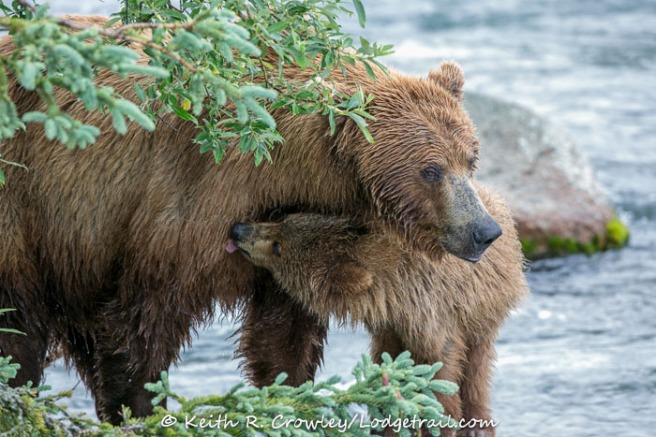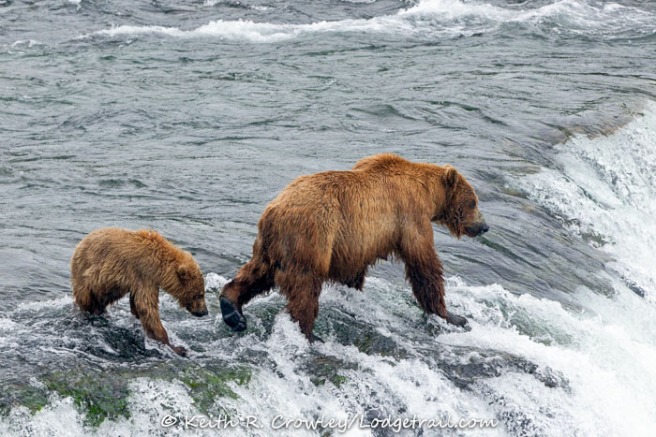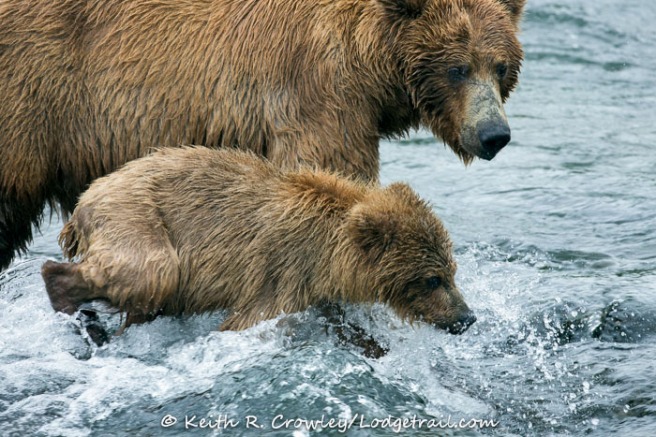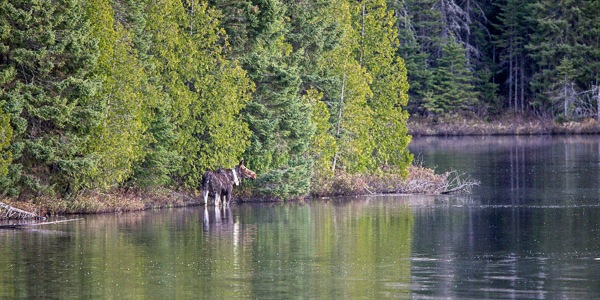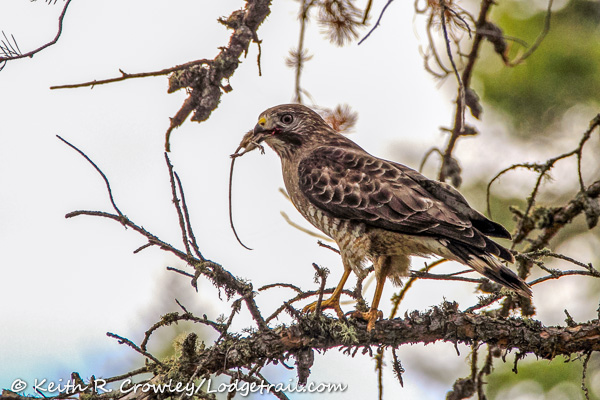Here are a few photos I find interesting from the past year. I won’t say they are my best photos technically or aesthetically, but they all mean something to me. In no particular order:
1 – Common loon family. The more I look at this Loon family photo, the more it grows on me. The best part of all is that these loons nested in front of my home in northern Wisconsin – almost right off my dock. This was the first time in many years that loons have successfully raised a chick here.

2 – Northern Lights. I’ve never even tried to photograph the aurora borealis before, but I was in the Yukon in September and they were cooking pretty good when I got back to camp one night. I wish the foreground was more interesting, but the intensity of the aurora was amazing and you take what nature gives you in these situations.

3 – Just another sunset in the Alaska Range in late August. The glacier winding its way down from the mountains is what makes the image for me.
4- Cross Fox. Over the years I have just missed on several photo ops with the Cross color variant of the Red fox. This year the stars aligned and I photographed 4 different Cross foxes in just a couple weeks. The first two were in British Columbia, the third was in the Yukon, and this is the last, on the tundra in the Alaskan interior.

5 – Stone’s sheep. This image is special to me because of the effort it took to capture. I spent nearly two full weeks climbing rocky hills in northern British Columbia trying to find these critters. Then, there they were. I photographed a few rams and a bunch of ewes and lambs. I chose this photo because these two were the first Stone’s sheep I had ever seen in the wild – and, of course, who doesn’t love lambs?

6 – Raccoon babies. As with the loons, I didn’t have to go far to find these raccoons in a den. This tree stump was right next to my house. I watched it carefully for two weeks after seeing the female raccoon carry one of the tiny newborn babies into the tree. Although the mother coon came and went regularly, the babies were never visible. When they finally reappeared, it was for one evening and I only got a few photos before they were gone for good.

7 – Dall sheep ram. This is another case of the effort being the most significant thing about this image. I climbed a nasty mountain and waited all afternoon for this full-curl ram to stand up. He never did. Eventually, it got dark and I went back down the mountain. You win some, you lose some.

8 – Grizzly bear. The last day of any outing is usually my best. I have no idea why, but it just seems to work out that way. In the previous few days I’d been looking for griz with no luck. On my last morning in interior Alaska this curious grizzly proved the rule. She showed up at first light and waited until the rising sun hit her, and for me to take some photos, before she left.

9 – River of Ice. When you say the word “glacier” I think most people envision a huge wall of ice with giant chunks plunging into the ocean. In my mind I see a river of ice, just like this, and I had this sunset behind it to complete the image.

10 – Damn! I suspect most people won’t like this image. It’s here because I had just written a story for a client specifically about wildlife crossings and roadkills and the costs of these collisions to people and critters. The story was being edited when I hit this deer. The damage to the vehicle was $6500 – almost exactly the national average for such insurance claims. The damage to the deer was worse.

11 – Bull elk… because no year is complete without gigantic, cranky, bugling bull elk.

13 – And the best for last, I guess. Family portrait of five Canadian lynx.
If you follow me on social media you’ve heard the story, but here’s the short version: I searched a specific area for lynx for 3 years because I knew there were cats around. One morning in February I found fresh lynx tracks. I followed them. I eventually found her – actually she found me. I got some great photos of the adult female cat. Then it got better. Since it was a bitterly cold morning, she eventually settled down about twenty yards from me to warm up in a patch of sun. Then, like magic, one by one four mostly-grown kittens joined her. They stayed there for the better part of an hour. That’s the condensed version of this once-in-a-lifetime photo op. The adult female is in the middle, sitting.

Note: You can see all the images from the Lynx encounter here: https://www.lodgetrail.com/lynx_group
And there is even a short video clip at https://www.youtube.com/watch?v=THAgD5rWIqg
You can see and purchase prints of all these images and more of my favorites at: https://www.lodgetrail.com/wildlife#ha3d24fb9
Happy New Year!


























































